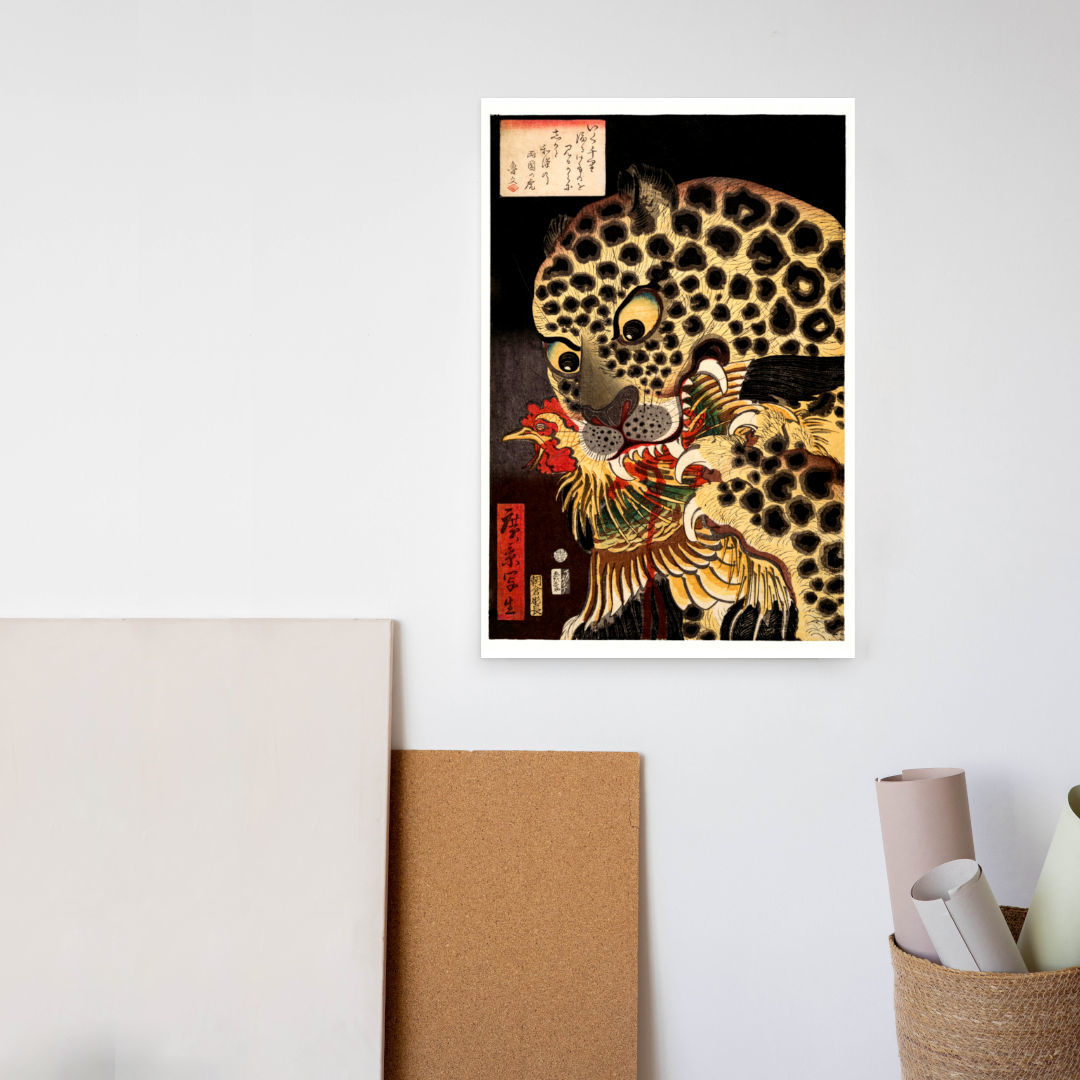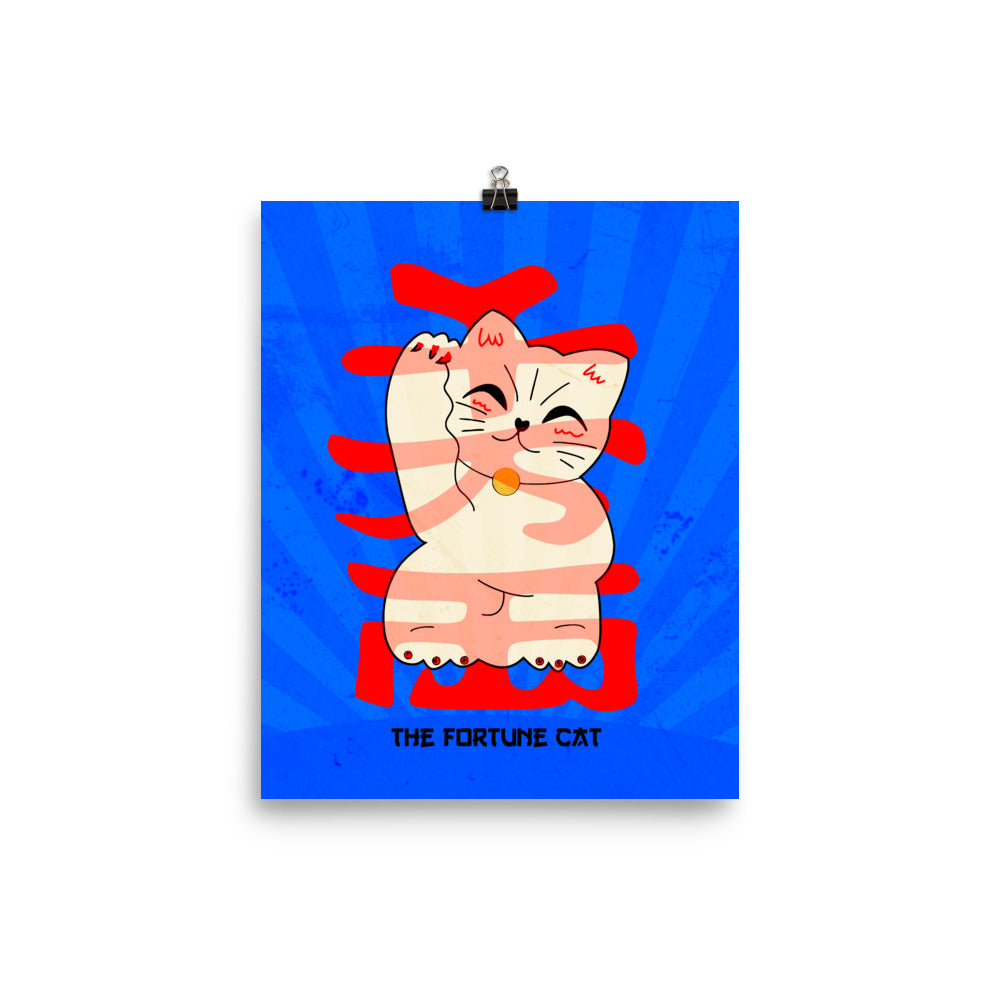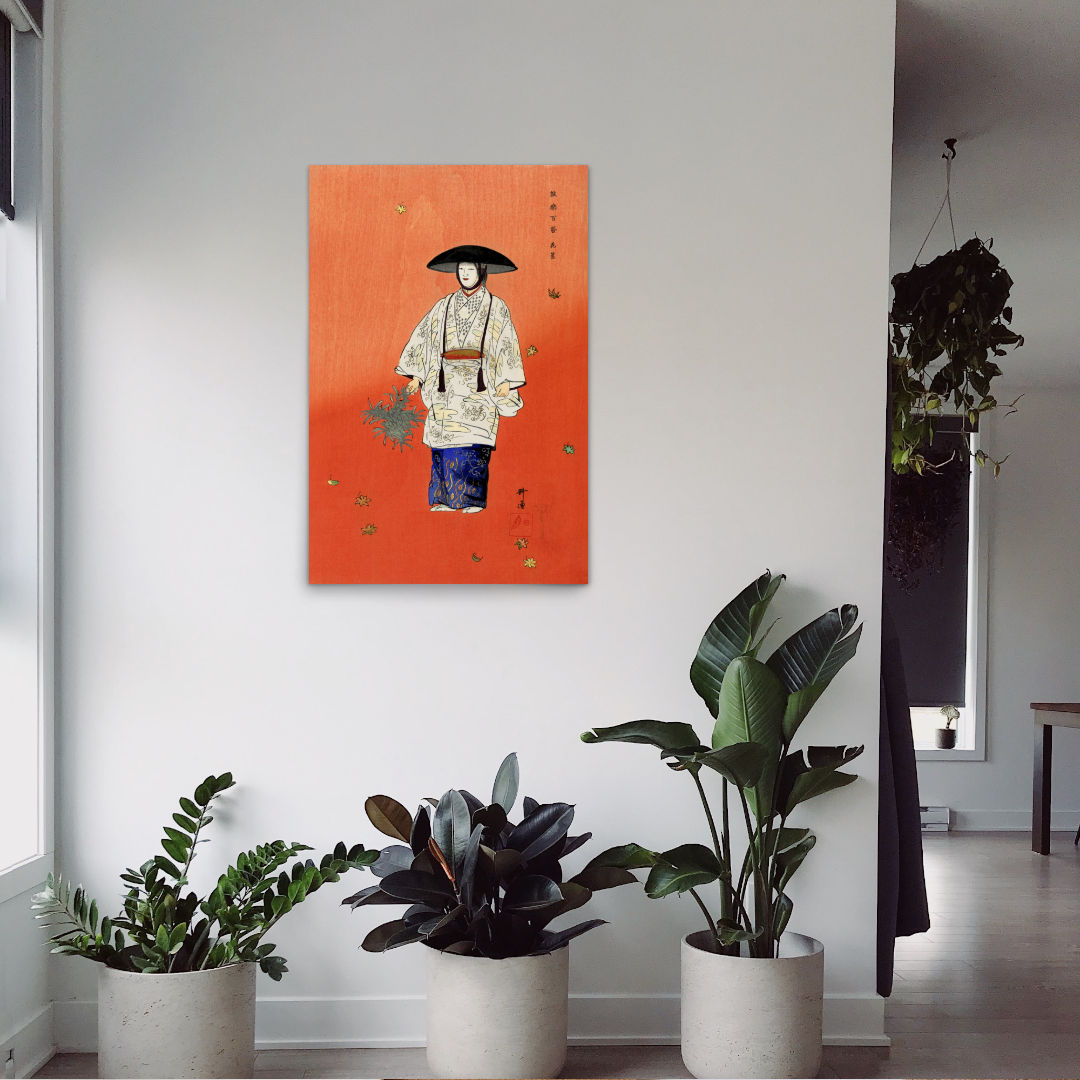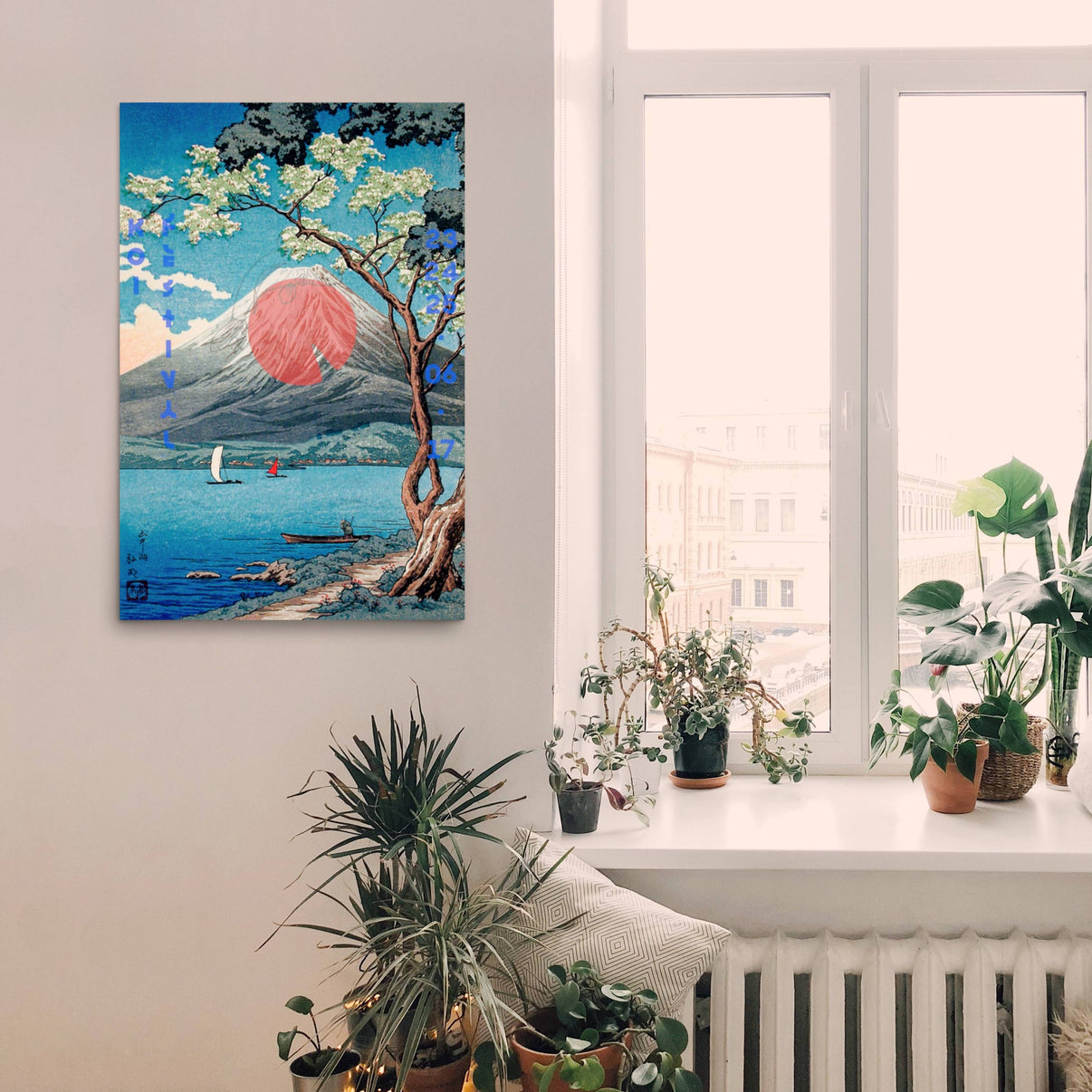
Vintage Japanese Posters: Timeless Art for Modern Homes
Share
Key Takeaways
- Japanese poster art blends storytelling, symbolism, and harmony
- Vintage Japanese posters bring cultural depth to modern homes
- Ukiyo-e styles influence today’s design trends
- Minimalist Japanese art creates subtle focal points
- Quality reproductions use acid-free paper and fade-resistant inks
- Japanese prints suit Japandi, minimalist, and boho styles
- Traditional art balances bold imagery with negative space
- Subjects include folklore, animals, landscapes, and theater
Why Japanese Poster Art Stands Out in Interior Design
The history of Japanese print culture spans centuries, beginning with the sophisticated woodblock prints of the Edo period (1603-1867). These early masterpieces established artistic principles that continue to define Japanese interior design posters today. Unlike Western art traditions that often prioritized realism, Japanese prints embraced stylization, flat perspective, and symbolic representation. This distinct visual language created immediately recognizable artwork that communicates across cultural and time barriers. The careful attention to composition—particularly the relationship between positive and negative space—makes these pieces feel intentional and balanced in any interior setting.
What truly sets Japanese poster art apart is its remarkable balance of seemingly contradictory elements: elegance with boldness, simplicity with storytelling depth, and traditional motifs with timeless appeal. Artists working in this tradition mastered the art of visual economy—using only necessary elements to convey meaning and emotion. This restraint creates artwork that remains visually striking without becoming overwhelming or busy. The conscious use of asymmetry creates dynamic tension that draws the eye naturally across the composition, making these pieces continually engaging rather than static decorations.
Japanese Poster Art
Simple Yet Striking
Japanese posters balance simplicity and storytelling, using minimal elements for bold, timeless appeal in modern homes.
Source: The Met Museum
The subject matter of vintage Japanese posters spans diverse categories that offer something for virtually any aesthetic preference. Folklore-inspired prints feature mythical creatures, legendary heroes, and symbolic elements that add narrative depth to interior spaces. Nature motifs—from dramatic mountain landscapes to delicate cherry blossoms—bring elements of the natural world indoors. Theatrical subjects capture the drama and emotion of traditional performance arts like Kabuki and Nō. Animal imagery ranges from realistic to stylized representations, often imbued with symbolic meanings. Fortune and prosperity symbols like maneki-neko (beckoning cats) add cultural significance beyond mere decoration.
Crofty Prints: The Best Place to Buy Vintage Japanese Posters Online
Quality matters tremendously when selecting vintage Japanese posters for your home. Inferior reproductions with poor color accuracy and cheap materials fail to capture the subtle beauty of these artistic traditions. Crofty Prints addresses this challenge by producing each poster on premium archival paper designed specifically for art reproduction. This acid-free, pH-neutral foundation preserves the integrity of colors and prevents the yellowing that affects standard poster papers. The fade-resistant inks maintain vibrant hues even when displayed in areas with moderate sunlight exposure, ensuring these art pieces remain beautiful for years rather than months.
The printing process itself is engineered to honor the visual impact of the original artworks. Fine art giclee printing technology reproduces the subtle color gradations and line details that give Japanese art its distinctive character. The matte finish minimizes glare while enhancing the visual depth of the images. This attention to quality means that each poster possesses the richness and presence to serve as a proper focal point in thoughtfully designed rooms. Unlike mass-produced decorative posters, these reproductions maintain their visual impact even under close inspection.
Flexible display options allow collectors to incorporate these prints into various interior styles. Unframed poster prints offer affordable entry points for art enthusiasts and flexibility for custom framing to match specific interior schemes. For those seeking ready-to-hang solutions, the framed options come with carefully selected black, white, or red oak frames that complement the Japanese aesthetic while integrating seamlessly with contemporary interiors. This combination of quality materials and display options makes building a curated collection accessible to both serious collectors and those just beginning to explore Japanese art traditions.
Explore the full range of options in the Japanese Posters collection to find pieces that speak to your personal aesthetic.
Ukiyo-e Influence: Beauty in the Everyday
The ukiyo-e poster tradition emerged during Japan's Edo period, capturing what artists called "the floating world"—the pleasure-seeking urban lifestyle of the merchant class. These woodblock prints depicted everyday scenes, from busy marketplaces to quiet moments in nature, elevating ordinary experiences through artistic representation. What makes this tradition particularly influential is its democratic approach—making art accessible to common people rather than exclusively for elites. This philosophy continues today in the popularity of art prints as an affordable way to bring quality design into any home.
The influence of ukiyo-e extends far beyond Japan, shaping Western art movements and contemporary design sensibilities. Impressionist painters like Monet and Van Gogh were profoundly inspired by Japanese prints' flat perspective, bold outlines, and compositional approach. Today's minimalist Japanese art carries forward ukiyo-e principles of visual efficiency—using only necessary elements to create maximum impact. Fashion designers regularly reference the clean lines and striking patterns found in these historic works. Interior designers appreciate how these compositions create focal points without overwhelming other elements in a space.

The Tiger of Ryokoku Poster exemplifies the powerful symbolism central to Japanese artistic traditions. Strong and dramatic, this image channels the raw energy and mythic strength often found in traditional Japanese folklore. The bold, hand-inked style captures dynamic movement through simplified yet expressive linework. This poster makes an ideal statement piece for entryways, studios, or interiors seeking something with cultural depth and visual edge. Its timeless palette of earthy neutrals pairs exceptionally well with Japandi and wabi-sabi aesthetics, where natural materials and thoughtful imperfection are celebrated.
Retro & Surreal: Whimsical Side of Japanese Print Culture
Beyond traditional art forms, Japan developed a vibrant commercial poster culture throughout the 20th century that embraced playfulness, surrealism, and bold graphic design. Vintage advertising from this period combined striking typography with whimsical illustrations, creating pieces that functioned both as commercial tools and legitimate artistic expressions. This playful approach to design reflected Japan's rapid modernization while maintaining distinctive cultural elements. The resulting style—combining clean composition with unexpected characters and scenarios—created a uniquely Japanese approach to graphic art that continues to influence designers worldwide.

The Retro Japanese Frog Poster captures this whimsical tradition perfectly. Cheeky, offbeat, and irresistibly fun, this frog print represents the vibrant mid-century Japanese pop culture aesthetic. The character design balances simplicity with personality, while the retro color palette creates instant nostalgic appeal. This playful piece works wonderfully in spaces that benefit from a touch of humor and unexpected charm—kitchens, bathrooms, children's rooms, or creative workspaces. The vintage style references Japan's golden age of graphic design while remaining fresh and relevant in contemporary settings.

The Fortune Cat Poster reimagines the traditional maneki-neko (beckoning cat) symbol in vibrant vintage style. This lucky icon has deep cultural roots—different colored cats traditionally attract different types of fortune, with raised paws inviting prosperity into the home or business. This modern interpretation maintains those symbolic elements while adding bold graphic appeal through strong lines and an eye-catching expression. It functions beautifully in entryways (where it traditionally welcomes good fortune), office spaces (where its success-bringing properties are appreciated), or anywhere needing a colorful focal point with cultural significance.
Landscapes and Theatrical Motifs: Capturing Atmosphere
Japanese poster art excels at creating atmospheric compositions that transport viewers to specific emotional and physical landscapes. This tradition draws heavily from Japan's deep connection to natural environments and theatrical storytelling. Mountain scenes, in particular, hold special significance in Japanese culture—representing permanence, spiritual significance, and the sublime power of nature. Similarly, theatrical subjects capture the heightened emotions and stylized movements of traditional performance arts that have been refined over centuries. These posters don't merely represent subjects; they convey specific moods and cultural contexts through careful artistic choices.

The Actor in the Nō Play, Hanagatami (1926) provides a window into Japan's refined theatrical traditions. This 1926 print captures a dramatic moment from classical Japanese performance, showcasing the elaborate costumes and stylized expressions that characterize Nō theater. The delicate detailing and expressive brushwork convey both the physical appearance and emotional essence of the character. This print brings cultural depth to artistic interiors or gallery walls that appreciate historical context and visual storytelling. Art historians particularly value how these theatrical prints preserved performances from an era before video documentation.

The Japanese Vintage Mountain Poster demonstrates the quiet power of minimalist Japanese art. This serene landscape evokes contemplation through its restrained composition and subtle color gradients. Unlike Western landscape traditions that often aim for photographic detail, this piece captures the emotional essence of mountain scenery through simplified forms and atmospheric effects. The resulting image creates a sense of peaceful stillness that complements calm interior spaces. This style works particularly well in bedrooms, meditation areas, or minimalist living rooms seeking visual interest without busy patterns or high-contrast elements.
Styling Tips: Where to Hang Japanese Vintage Posters
Japanese interior design posters integrate beautifully into various contemporary design approaches, with Japandi interiors offering perhaps the most natural stylistic match. This fusion of Japanese minimalism and Scandinavian functionality creates clean-lined spaces where thoughtful art pieces become central elements. In these interiors, vintage Japanese posters provide cultural depth while maintaining the uncluttered aesthetic that defines the style. Position these prints as solo focal points rather than in busy groupings, allowing negative space around the artwork to enhance its visual impact. Natural wood frames in light or medium tones complement this design approach, echoing the organic materials often featured in Japandi furniture.
Perfect for Japandi
Vintage Japanese posters excel as focal points in Japandi interiors, using negative space and natural wood frames for impact.
Modern boho rooms benefit from the narrative qualities and handcrafted feel of vintage Japanese posters. These eclectic spaces typically layer textures, patterns, and cultural references to create personally meaningful environments. Japanese prints add sophisticated visual interest while introducing artistic traditions that complement boho's global perspective. In these settings, consider pairing ukiyo-e landscapes with textiles featuring natural motifs, or position theatrical prints near collections of objects with stories attached. Black frames create definition that helps these prints stand out among the varied elements typical of boho interiors.
Gallery walls with cultural themes gain coherence and depth from thoughtfully chosen Japanese artwork. When creating these arrangements, design experts recommend maintaining some consistent element—such as uniform framing or a limited color palette—to unify diverse pieces. Consider grouping prints by subject matter (all landscapes or all theatrical scenes) or by color scheme for visual harmony. Allow 2-3 inches between frames to give each piece visual breathing room while maintaining the collective impact. For these groupings, thin black frames often work best, creating definition without competing with the artwork itself. Position these gallery walls in transition spaces like hallways or stairwells where they can be appreciated gradually rather than all at once.
Final Thoughts: Bringing Timeless Japanese Aesthetics into the Home
Japanese art's enduring appeal stems from its remarkable ability to balance seemingly opposite qualities—telling rich stories through carefully simplified imagery. This artistic tradition demonstrates how restraint often communicates more powerfully than elaboration. Vintage Japanese posters bring this visual wisdom into contemporary homes, creating focal points that add cultural depth without visual clutter. The careful consideration of negative space in these compositions complements modern interior design approaches that value thoughtful minimalism over accumulation. By incorporating these principles through quality reproductions, homeowners introduce not just decoration but a visual philosophy that enhances daily living environments.
Crofty Prints' selection offers museum-quality reproductions that honor these artistic traditions while fitting seamlessly into contemporary homes. The attention to material quality—acid-free papers, fade-resistant inks, and professional framing options—ensures these cultural artifacts maintain their beauty over time. Unlike mass-produced decorative posters, these reproductions capture the subtle details and color relationships that give Japanese art its distinctive character. This quality difference becomes increasingly apparent over time, as inferior prints fade or yellow while properly produced reproductions maintain their visual impact.
Those interested in exploring Japanese aesthetic traditions should consider starting with a single significant piece rather than multiple smaller prints. This approach honors the Japanese concept of focal points and allows the artwork's qualities to be fully appreciated. Whether you're drawn to the bold symbolism of folklore subjects, the serenity of landscape compositions, or the expressive drama of theatrical scenes, the Japanese Posters collection offers options that bring authentic cultural artistry into contemporary living spaces.
Frequently Asked Questions
What makes Japanese poster art different from Western posters?
Japanese poster art typically features more negative space, asymmetrical composition, and symbolic representation rather than strict realism. These posters often tell stories through simplified imagery rather than direct representation, using flat perspective and bold outlines. While Western poster traditions often fill the frame completely, Japanese designs use empty space as an active design element, creating balance through absence rather than addition.
How do I know if a Japanese poster will match my home's style?
Japanese prints work surprisingly well with many contemporary styles due to their clean lines and thoughtful composition. They pair naturally with minimalist, Scandinavian, and mid-century modern interiors. For traditional or maximalist homes, choose prints with richer colors and more detailed imagery. Look for color elements in the poster that complement your existing palette—even one matching color can create cohesion between the art and your interior.
What's the difference between ukiyo-e and other Japanese art styles?
Ukiyo-e specifically refers to woodblock prints from Japan's Edo period that depicted "the floating world" of urban pleasure centers. Other Japanese styles include sumi-e (ink wash painting), nihonga (traditional Japanese painting), and various modern graphic design movements. Ukiyo-e is distinguished by its flat perspective, bold outlines, and subjects from everyday life or popular entertainment like kabuki theater.
How should I frame Japanese posters?
Simple, clean-lined frames work best with Japanese posters. Black frames create dramatic contrast and definition, particularly with prints that have white backgrounds. Natural wood frames complement the organic elements often found in Japanese art. Mats should be used sparingly—many Japanese prints work best with minimal or no matting to maintain their original proportions and composition. Always use UV-protective glass to prevent fading if the print will be in direct sunlight.
What size Japanese poster works best for different rooms?
For living areas and larger walls, medium to large prints (18×24 inches or larger) create proper visual impact when viewed from a distance. Smaller rooms like home offices work well with medium-sized prints (12×18 to 16×20 inches). For gallery walls or smaller accent areas, a collection of smaller prints (8×10 or 12×16 inches) can be grouped together. Consider viewing distance—larger rooms require larger prints to maintain visual impact.
How do I build a collection of Japanese posters that work together?
Start by choosing pieces with a connecting element—similar subject matter, complementary colors, or the same artistic period. Create visual conversation between pieces by selecting prints with complementary (not matching) themes. For example, pair a dramatic tiger image with a serene landscape to show different aspects of natural subjects. Maintain consistent framing across your collection to create cohesion even with diverse artistic styles.
